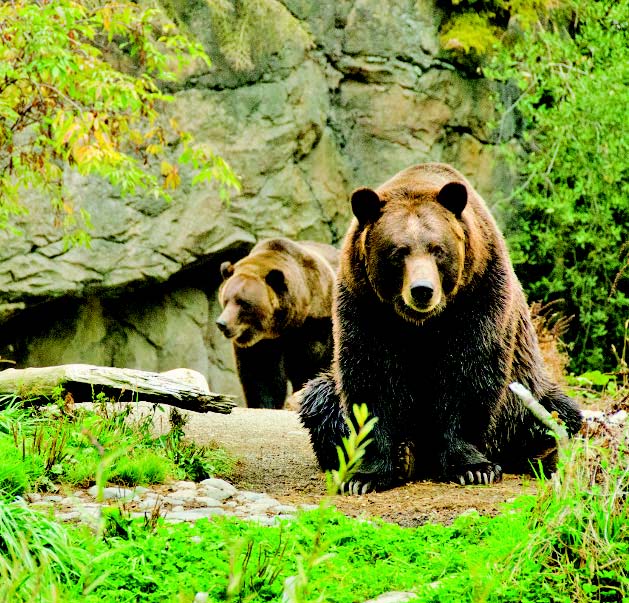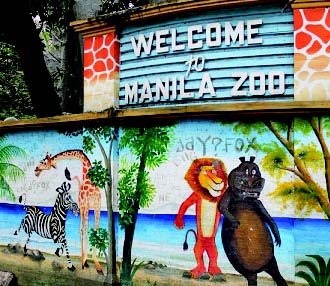“I am cautiously optimistic we’ll be able to overcome this, but I’m not sure.”
David Towne, former Director of Woodland Park Zoo in Seattle, expressed uncertainty when asked about the future of zoos. He was quoted on Justine Worland’s article on The Future of Zoos: Challenges Force Zoos to Change in Big Ways.

David Towne isn’t the only person who feels the pressure on zoos. These animal enclosures are constantly being challenged by animal welfare and rights groups, environmentalists, and even concerned private individuals. The pressure is palpable from the more frequent protests, zoo closures, and anti-zoo campaigns.
As David, many wonder: What will be the future of zoos? Will there be one?
Seaworld’s Orca breeding program ended
SeaWorld has housed orcas, also called killer whales, since 1965. The first orca at SeaWorld was Shamu. Shamu was only three years old when she was removed from her home to be brought to the oceanarium.
After the capture of wild orcas became illegal, SeaWorld started breeding them in captivity. In 1985, the first orca bred in captivity to live long enough was introduced to SeaWorld Orlando.
She was Kalina, advertised by SeaWorld as “Baby Shamu”. At four years old, she was separated from her mother, and was impregnated at six. In the wild, the average reproduction age of orcas is 15 years old.
The breeding program of SeaWorld continued, and so did the pressure from concerned groups. In 2011, PETA filed a lawsuit against SeaWorld in the grounds that the captivity of the orcas is slavery, hence, in violation of the 13th Amendment to the U.S. Constitution. The release of the documentary Blackfish didn’t help the oceanarium’s case, and artists started cancelling shows in SeaWorld parks.
In 2016, the oceanarium announced that they would no longer breed orcas. The current generation of captive orcas in SeaWorld would be the last.
Zoos are closing down

Woodland Park Zoo in Seattle had a $3 million elephant exhibit built in 1989. In 2014, the zoo’s facility faced criticisms after an elephant, Watoto, died in their care. In the same year, Woodland Park Zoo’s elephant exhibit closed down, and their remaining two elephants, Chai and Bamboo, were later transferred to a better-equipped facility.

Buenos Aires Zoo in Argentina had over 2,500 animals, and had been operational for 140 years. In 2016, however, Mayor Horacio Rodríguez Larreta announced that the zoo would be closed, and most of its animals would be transferred to reserves. He said, “This situation of captivity is degrading for the animals, it’s not the way to take care of them.”

In the Philippines, local and international groups are pressuring Manila Zoo to release Mali, the lone elephant housed in the facility. The pressure for Manila Zoo to care for the animals’ welfare increased when a lion under their care, Raffy, was video-recorded having a seizure. As of writing, the zoo is indefinitely closed from the public. Manila City Mayor Joseph Estrada ordered the zoo’s closure after it was tagged by the Department of Environment and Natural Resources as a major pollutant of Manila Bay.
A case for zoos
Zoos defend their existence by asserting significance. Below are two of some of the most common defenses used by these facilities.
Zoos are educational
Most zoo visitors noted that they didn’t learn anything new from their zoo visit, a 2014 survey by WildCat Conservation found. While there are studies that show the contrary, the gained knowledge of zoo visitors have been found to be minimal.
While zoos give us a chance to observe animals up close, what we get to witness is far from an animal’s natural behavior. Placed in an artificial setting, animals do not display some of their inherent behaviors such as hunting and, in some cases, even dust bathing. There are also animals in enclosures recorded to show signs of obsessive-compulsive disorder and distress, aside from other unusual behavior. Examples include an elephant pacing back and forth, and a bear repeatedly smashing his head into a metal door in his enclosure.
Zoos help people to connect to animals
Zoos hold animals in cells for human use. In the face of the sixth mass animal extinction and climate change, should we continue fostering this nature of connection that asserts human dominance over non-human animals? Or is it time to form a new connection, one that respects nature and its beings, enough to let them live their natural lives in their habitats?
As we continue to learn more about non-human animals, we realize that they are more complex than we thought; that, maybe, they do mind being caged.
“It is hard to avoid the conclusion that in some way the animals understand that the world around them is an artificial one, that these phobias and psychotic episodes represent reactions to that artifice, or subversions of it… The animals know,” Benjamin Wallace-Wells of The New Yorker expressed.
The future of zoos
“Most people think of progress as an ascending line on a graph — zoos will just get better. But evolution is like a tree or a bush branching in all directions,” said John Coe, the designer of the Zoo360 concept in Philadelphia, for Justine Worland’s article on the future of zoos.
Will there still be zoos in the future? It is difficult to predict, but a company in China thinks zoos aren’t out of the picture yet — at least, not the ones that don’t look anything like they do now.
A virtual reality (VR) zoo opened in Guangzhou, China last January 2018. The VR zoo uses immersion technologies such as VR, 3D projection, and holography to bring a wild experience to the guests without the use of animals.
Liang Fengyun, head of the Guangzhou Zoo, said in 2018, “Tourists can interact with animals without disturbing them.”
The opening of the virtual zoo followed the city’s closure of its 24-year-old animal circus.
Humans in cages
Denmark has an ambitious zoo project that has even the experts divided. Zootopia, not the movie but the real life zoo, proposes a 121-hectare enclosure where the experience is reversed: humans are caged, while animals roam free, or at least as free as they can be in an artificial human-designed environment.
The idea isn’t new. You see this in safaris, as well as in films such as Jurassic Park where human visitors explore the world of dinosaurs through pods called gyrospheres. (Spoiler alert: it doesn’t go too well.) While the general populace has applauded the zoo for providing a bigger enclosure for the animals, an enclosure is still an enclosure.
New York Times Magazine writer Charles Siebert in his piece “The Dark Side of Zootopia” expressed a saddening but visible trend: the collapse of wildlife in the human epoch. “[It] could well be one of the singular achievements of the anthropocene, a time when human representations of the wild threaten to become the wild’s reality.”
Photos by Argel Ardales
This appeared in Animal Scene magazine’s June 2019 issue.
Related stories:
– Cruelty in cages: How zoos affect animals’ mental health
– Zoos give “very shy” cheetahs their own support dogs
– The problem with zoos and how to tell which ones are okay






